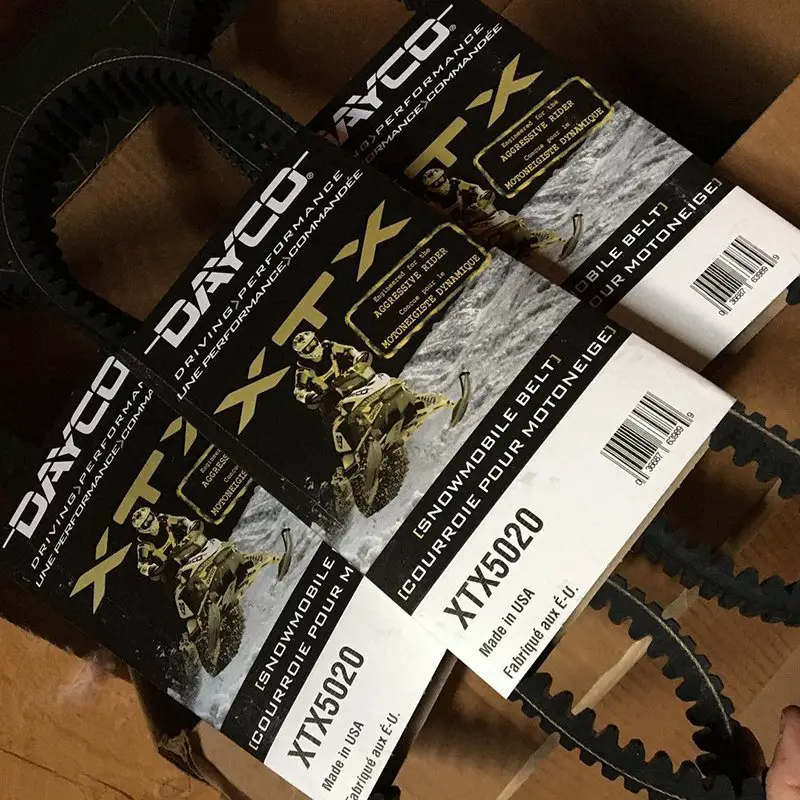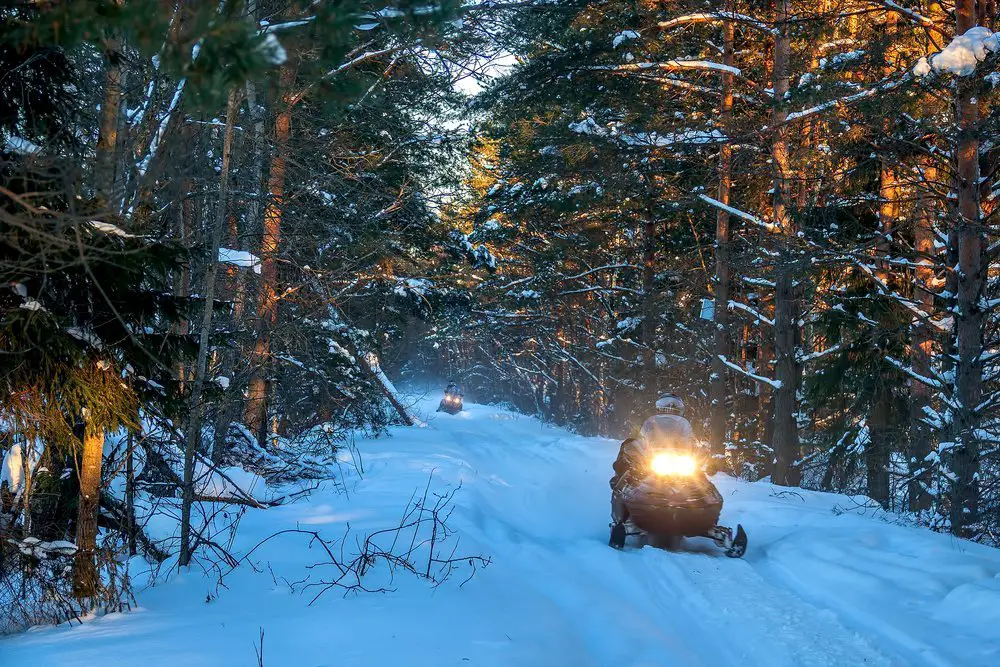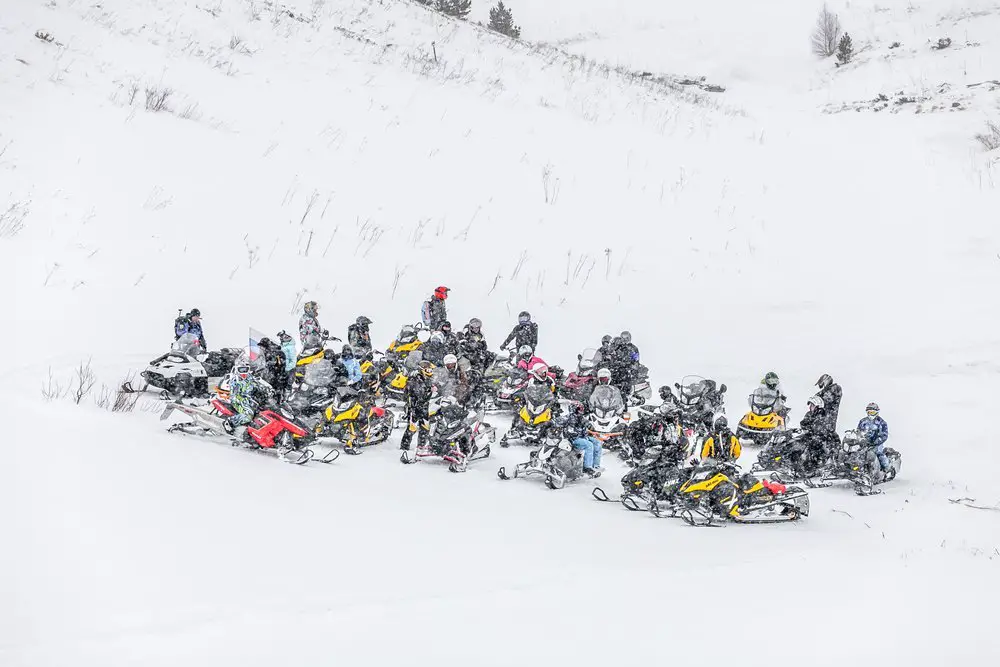It’s important to know when it’s time to change the drive belt on your snowmobile. Worn out or damaged drive belts can cause your snowmobile engine to run at sub-optimal RPM levels, which will lead to performance issues.
When should you change a snowmobile belt? For your snowmobile engine to run at optimal RPM levels, it’s best to replace your snowmobile belt every 1500 miles. If you aren’t interested in top end performance, you can go without changing your snowmobile’s drive belt up until around 3000 miles.
The type and amount of riding you do will also play a factor. If you’re a casual trail rider who only gets out a handful of times a year, you will get more life out of your belt than someone who tackles mountain terrain all winter long, for example.
Have more questions about snowmobile belts? I’ve got answers! Feel free to keep reading.
Table of Contents
How to tell if your snowmobile belt is worn
Your snowmobile belt is made out of rubber, and rubber tends to show wear easily.
Tears, missing cogs, cracks, cordage sticking out of the sides of the belt and looseness are all common signs that your snowmobile belt has been worn out and should be replaced.
However, not all snowmobile belt damage will reveal itself as one of these common signs of wear.
If you are noticing changes in RPM or your snowmobile has become sluggish off the start, almost like it’s starting in second gear, this is another tell-tale sign of a worn out snowmobile belt.
Its good practice to perform an inspection of your drive belt at least twice a season, more if you are a daily rider.
Which way does a snowmobile belt go on?
People seem to think that there is one way a snowmobile belt has to go on when you are installing it, and it’s simply not true.
With new snowmobile belts, it doesn’t matter which way you put it on. What does matter is that once you run your belt a certain direction, you keep it running in that direction and don’t reverse it. This is why it’s important to remember which direction your used belt was running any time it is removed.
The arrows that belt manufacturers include on snowmobile belts are there to help you remember which way you had installed the belt, not to suggest which way a new belt should be installed.
Do you have to break in a snowmobile belt?
One of the biggest issues some people face when they get their new snowmobile or a new belt put on is going full pin right away and blowing the belt. Blown belts occur when fresh belts are not properly warmed up.
You should always break in your snowmobile belts. Failure to properly break in a new belt can result in the belt breaking which can damage to your clutches, belly pan, belt guard or worse.
Spending the little time it takes to break in your new belt can save you a headache and some cash down the road. Have some patience with it, you’ll be full throttle in no time.
How do you break in a snowmobile belt?
How to properly break in your snowmobile belt is a highly debated topic on the internet these days. In a sense, most ways are right and there is no specific one way to do it. You just need to do it.
The best way to break in a new snowmobile belt is by riding through flat trails with a light and easy, varied throttle for the first 30 miles.
Aggressive throttling and pushing your new belt to top speeds right out of the box is a sure fire way to have it blow up on you. So, save your time and money by properly breaking it in.
What causes a snowmobile belt to squeal?
Squealing noises coming from your snowmobile are never fun. Often times the noise is coming from your belt. But what causes it?
Your belt deflection being too tight is often times the issue which causes your snowmobile belt to squeal. You will see this more frequently in newer belts, but it’s not uncommon to see in older belts. You can loosen your belt deflection and fix the squealing by adjusting the secondary clutch.
To properly adjust your belt deflection, check out this video.
What do the numbers mean on a snowmobile belt?
The numbers you find on snowmobile belts are actually the product number, these are put on so you and the manufacturer can tell which belt is which.
If you have an issue with a new belt you purchased, you can call up the manufacturer’s customer support line, and often times they will ask you for the numbers on the belt to get you a replacement.
Do you have to wash a new snowmobile belt?
When it comes to new snowmobile belts, there is no hotter debate on the topic than whether you should wash your new snowmobile belt, or if it actually does anything at all?
The truth is, washing your snowmobile belt is no longer necessary because factory belt production has improved greatly over recent years. It used to be common practice to wash new belts with hot water and soap to remove any residue from the belt molding process that could cause the belt to slip easier.
In today’s belt production, rarely if ever will you find a new belt that has such residue that would require it to be washed before use.
If you are stuck in the habit of washing your snowmobile belts, it won’t likely cause any damage to the belt itself, but it also won’t be doing much of anything either.
Final thoughts
Your snowmobile belt is a vital piece that keeps your snowmobile running at peak performance. Damaged and or worn out belts can lead to a variety of issues down the line that could easily be avoided by regular belt checks and maintenance.
Personally, I like to check on my drive belt for wear or damage every 250 miles or so to be on the safe side. But it’s recommended you do so at least once every 500 miles to see if your belt is nearing the end of its life span.
Happy sledding!
References
https://www.carlislebelts.com/news/products/maximize-performance-snowmobile-belt-tips



